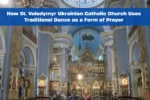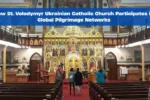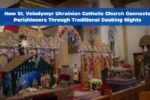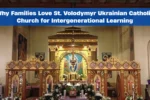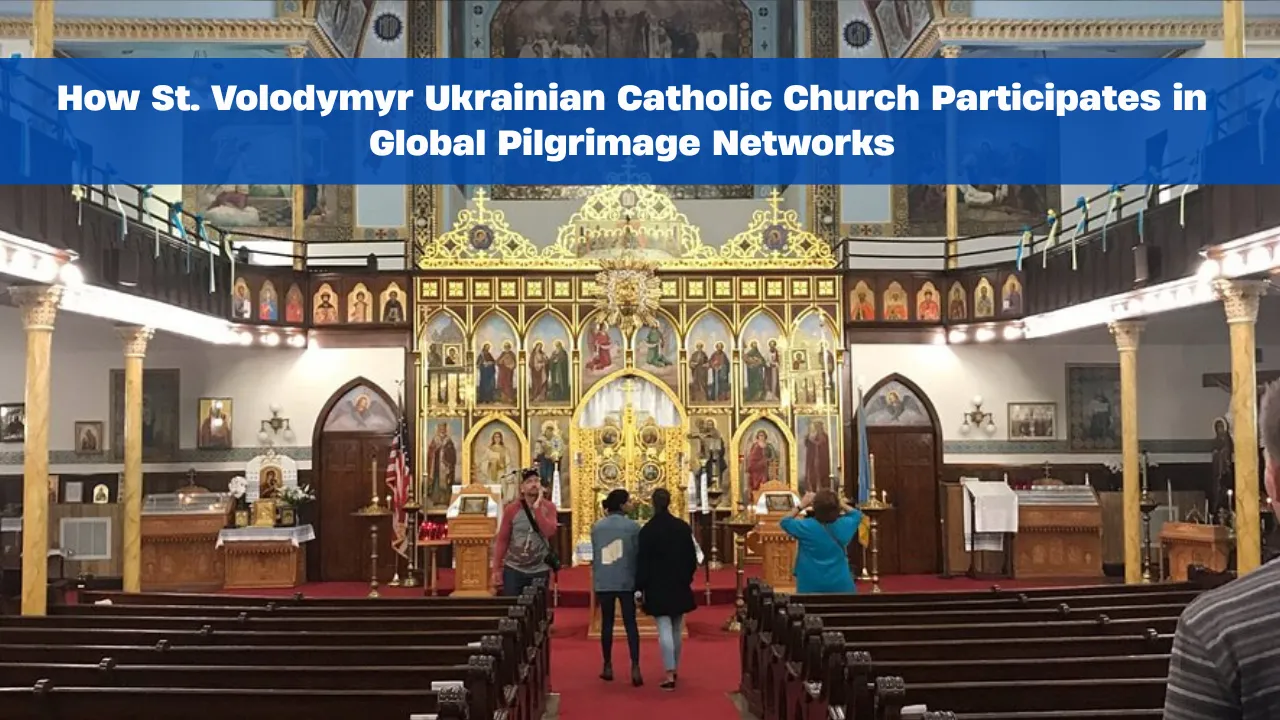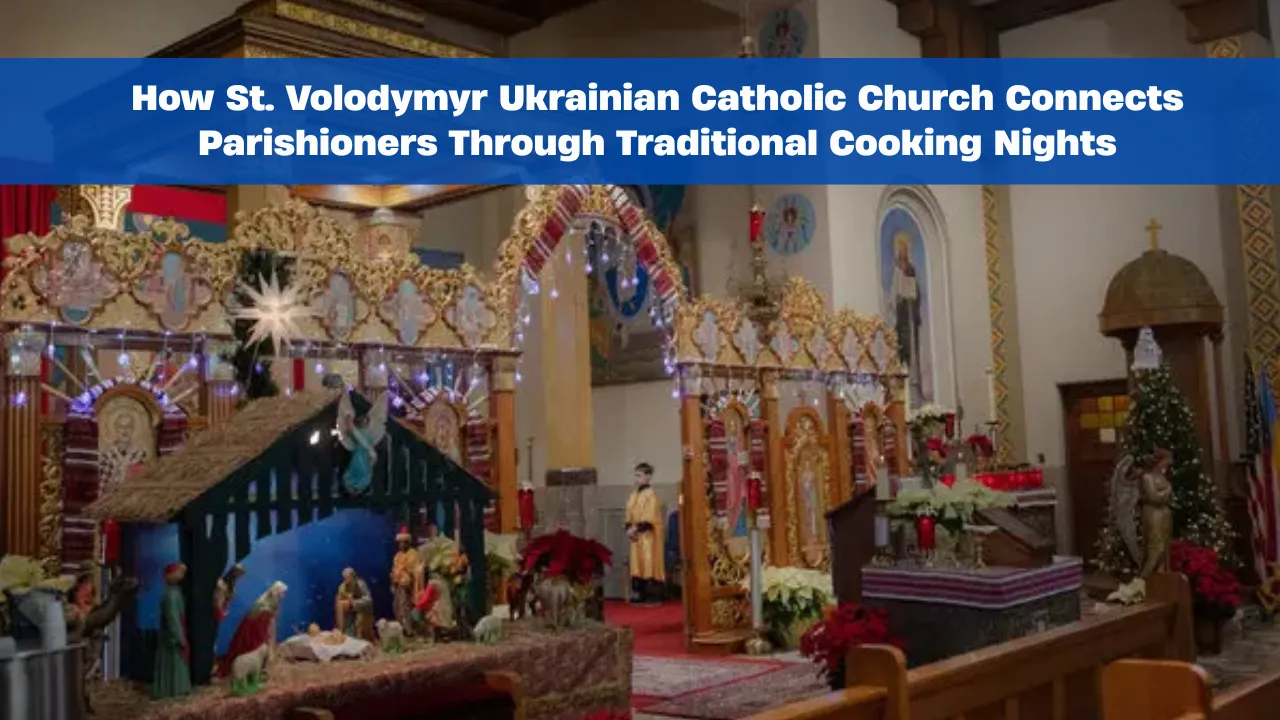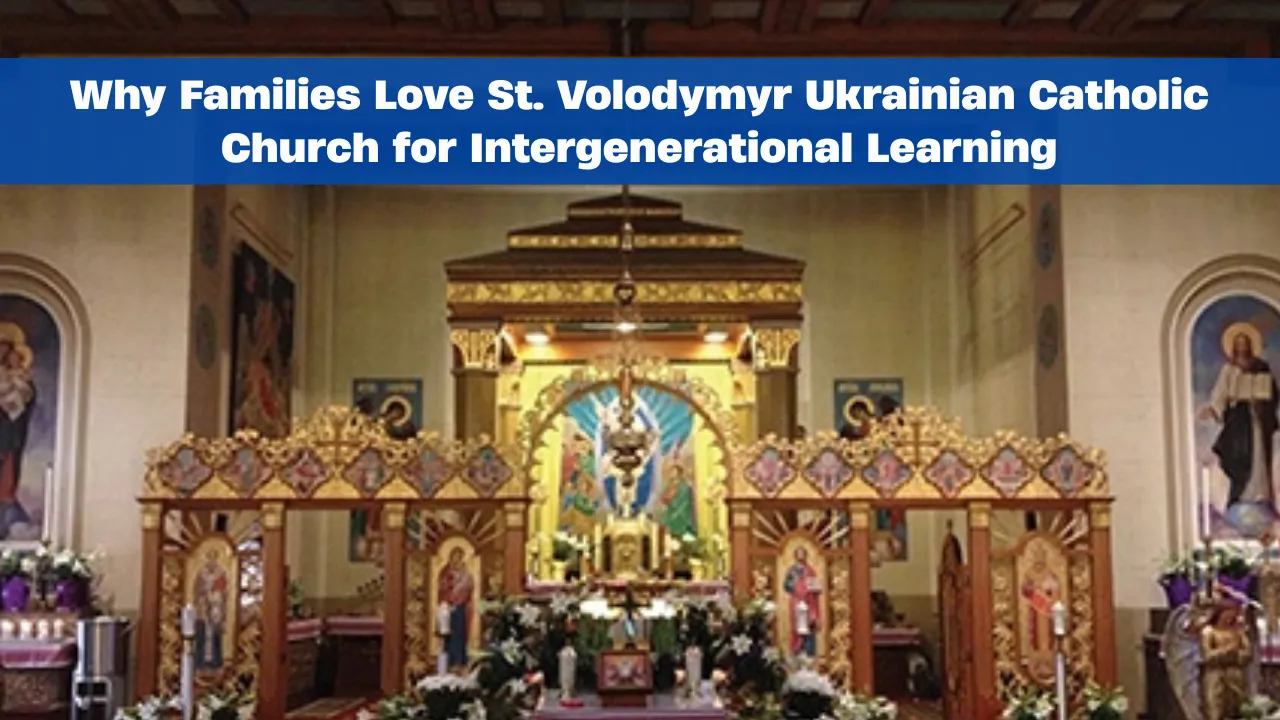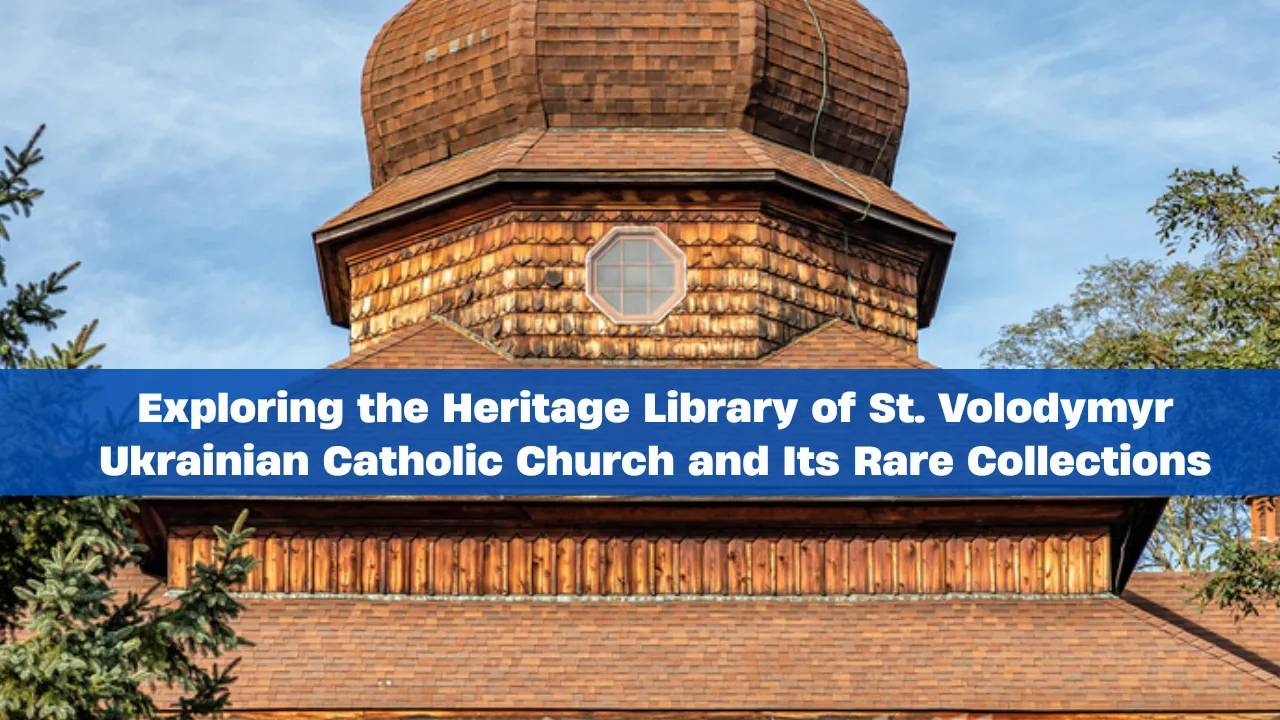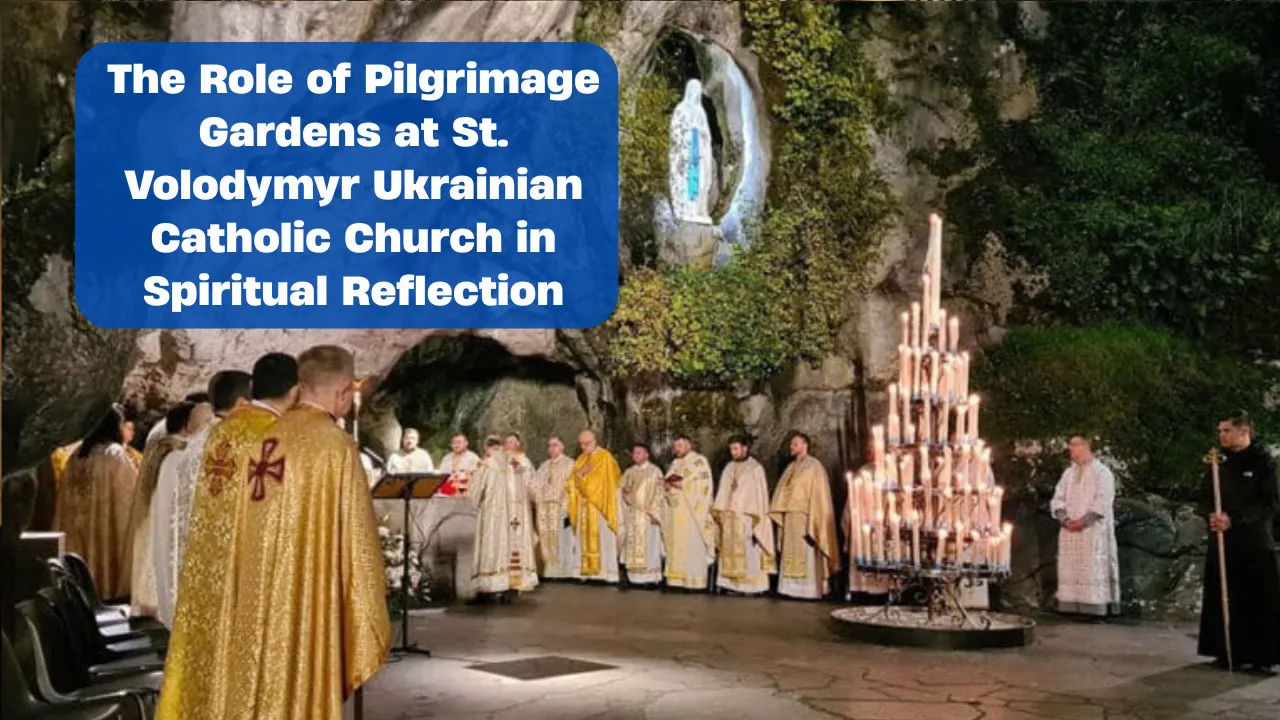Sacred Ritual Preparations are the quiet heartbeat of worship at St. Volodymyr Ukrainian Catholic Church. Long before the first hymn echoes through the nave, a series of reverent, symbolic actions take place behind the altar. These are not mere practical tasks — they are spiritual acts, steeped in history and devotion. For the clergy, servers, and assistants, these moments hold as much weight as the liturgy itself.
This article offers a rare glimpse into what unfolds in that sacred space. We will walk through each step, from preparing the holy gifts to lighting the candles, and discover how these ancient traditions shape the worship experience. You will also see the roles, symbolism, and meaning that make these preparations a vital part of church life.
Sacred Ritual Preparations
The Sacred Ritual Preparations at St. Volodymyr Ukrainian Catholic Church embody centuries of Eastern Catholic tradition, blending deep faith with precise action. Every step — from selecting the bread and wine to vesting the clergy — is performed with prayerful focus. The preparations happen in the sanctuary, a place set apart from the congregation’s view, emphasizing reverence and devotion. Here, incense is readied, candles are lit, vestments are donned, and the sacred vessels are arranged with care. These rituals are not hurried chores; they are intentional, symbolic acts that connect those serving behind the altar to the mystery of the liturgy. Understanding them brings a deeper appreciation for the worship that follows.
Overview Table of Key Elements
| Element | Purpose | Symbolism |
| Bread (Prosphora) | Prepared for Eucharist | Body of Christ |
| Wine | Mixed with water for Eucharist | Blood of Christ, life and redemption |
| Vestments | Sacred garments for clergy and servers | Purity, service, set-apart role |
| Incense | Burned during service | Prayers rising to heaven |
| Candles | Lit before worship | Light of Christ |
The Hidden World Behind the Altar
Behind the altar lies a world rarely witnessed by the congregation. In the sanctuary, silence is often punctuated only by the quiet sound of footsteps, soft prayers, and the faint clinking of sacred vessels. At St. Volodymyr Ukrainian Catholic Church, this space reflects the rich beauty of Ukrainian Catholic heritage. Gold-gilded icons watch over the preparations, and the scent of incense lingers in the air. Every movement — whether placing a chalice on the table or arranging the liturgical books — carries purpose. The sanctuary is more than a working space; it is a spiritual stage where worship begins long before the opening hymn.
Preparing the Holy Gifts
The preparation of the bread and wine for the Eucharist is among the most sacred acts before the Divine Liturgy. The bread, known as prosphora, is baked from simple ingredients but carries profound meaning. The priest carefully cuts it according to ancient prayers, setting aside the central portion — called the Lamb — for consecration. The wine, often mixed with a small amount of water, is poured into the chalice with equal reverence.
These steps are not mechanical. Each is accompanied by scripture and prayer, asking for God’s blessing. Although the congregation may never see it, this moment is central to the worship that follows. It marks the quiet beginning of the spiritual feast that will be shared later in the liturgy.
The Vesting of the Clergy
Vesting is both a physical and spiritual preparation. At St. Volodymyr Ukrainian Catholic Church, each vestment is handled with care, often adorned with crosses and Ukrainian embroidery. The process is methodical: the sticharion, epitrachelion, zone, cuffs, and phelonion are all donned in order, each with its own prayer.
For the priest, these garments are more than ceremonial clothing. They signify his readiness to serve, his commitment to purity of heart, and his role as a representative of the Church. Altar servers also vest in robes, marking their participation in the holy work about to take place. This visible transformation mirrors the inner spiritual preparation required for the liturgy.
Incense and Light
Incense has been a part of Christian worship for centuries, and its preparation is a vital part of Sacred Ritual Preparations. Before the service, the priest places fragrant grains on glowing charcoal inside a censer. The smoke that rises fills the sanctuary, creating an atmosphere that lifts the heart and mind toward God.
Candles, too, are prepared with care. At St. Volodymyr Ukrainian Catholic Church, they are lit in a specific order, often beginning with those closest to the altar. Their light symbolizes Christ as the Light of the World, illuminating the path for the faithful. Both incense and candles serve as sensory reminders that the liturgy is an encounter with the divine.
Roles in the Preparation
Many hands contribute to the Sacred Ritual Preparations, each with a distinct role:
- Priest – Oversees and performs the preparation of the holy gifts, leads prayers, and ensures all is done according to tradition.
- Altar Servers – Assist in arranging items, lighting candles, handling incense, and supporting the clergy.
- Sacristan – Maintains and prepares vestments, vessels, and linens for each service.
- Choir and Cantors – Rehearse chants and responses, preparing the musical dimension of worship.
These roles require not only skill but also spiritual attentiveness, as every act is part of the offering to God.
Symbolism in Every Step
Every action behind the altar carries meaning:
- Bread – Christ’s body, offered for the salvation of the world.
- Wine – His blood, symbolizing sacrifice and eternal life.
- Vestments – A visible sign of the sacred role of the clergy.
- Incense – Prayer and the Holy Spirit’s presence.
- Candles – Christ’s light overcoming darkness.
This symbolism connects the faithful to the mysteries of the faith, even if they never see the preparations themselves.
Why These Preparations Matter
Without Sacred Ritual Preparations, the liturgy would lose much of its depth. These unseen moments set the spiritual tone for the entire service, ensuring that every hymn, prayer, and reading flows from a place of reverence. For the clergy and assistants, preparation is itself a form of worship — a way of offering themselves to God before leading others in prayer.
For the congregation, knowing these traditions can enrich participation in the liturgy. It invites a deeper awareness that what they witness in worship has been carefully, prayerfully set in motion long before they arrive.
Key Elements of Sacred Ritual Preparations
- Preparation of the bread and wine with prayer
- Vesting of clergy and altar servers
- Lighting of candles and preparation of incense
- Coordinated roles among all participants
FAQs
Q1: What makes the Sacred Ritual Preparations unique at St. Volodymyr Ukrainian Catholic Church?
The blend of Eastern Catholic tradition, Ukrainian heritage, and deep attention to symbolism makes them distinctive.
Q2: Do these preparations change during special feasts?
Yes, feast days often include additional prayers, processions, or more elaborate vestments.
Q3: Are the rituals the same across all Ukrainian Catholic parishes?
While the core traditions remain, details may vary based on local customs and parish practices.
Q4: How are altar servers trained for their role?
They undergo instruction in both practical duties and the spiritual meaning behind each action.
Q5: Why is incense so important in these preparations?
It represents prayer rising to God and serves as a sensory reminder of the sacred presence.
Final Thought
The Sacred Ritual Preparations at St. Volodymyr Ukrainian Catholic Church reveal a hidden world of devotion, discipline, and beauty. Long before the first chant is sung, careful hands and prayerful hearts prepare the sanctuary for worship. These acts, rooted in centuries of faith, remind us that the liturgy is not just an event but a sacred journey — one that begins quietly, behind the altar. By understanding these preparations, we can enter the service with greater reverence and gratitude, knowing the depth of love and tradition that stands behind every prayer and hymn.

